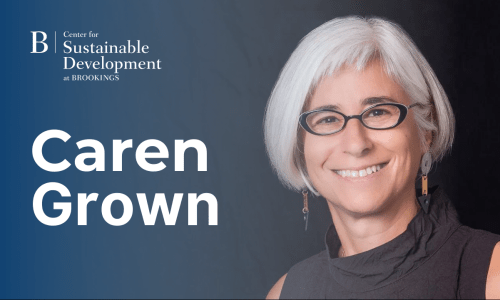Tomorrow, the seventh anniversary of 9/11, John McCain and Barack Obama will open the ServiceNation Summit in New York City.
Focusing on service
They will address hundreds of leaders from every sector of American life who have come together in the belief that expanding opportunities for service will be necessary to address the United States’ greatest challenges in the coming years.
Following on the heels of the Democratic and Republican National Conventions, where service was a prominent theme, the Summit is designed to get the two presidential candidates to support a ten-point Policy Agenda.
One of the points focuses on overseas service, including doubling the size of the Peace Corps.
Falling short
In his first State of the Union address after 9/11, President George W. Bush proposed raising the number of Peace Corps volunteers in the field to 14,000 within five years.
Today, however, the Peace Corps is stuck at around 8,000 volunteers — despite strong bipartisan support for the Peace Corps in the U.S. Congress, despite an abundance of applicants — and despite requests for volunteers from as many as 20 countries that the Peace Corps has been unable to meet. What’s the problem?
No easy answers
Budget constraints and budget priorities are the easy answer but not the best one. Growth in the U.S. economy has slowed to a crawl. U.S. government revenue is projected to be lower this year than last year.
The United States is locked into a war on terrorism that is absorbing more than half of the federal budget’s discretionary spending authority for the Defense Department alone.
All other discretionary programs are being squeezed to provide space for tax rebates and other spending to offset weakening demand and bolster employment.
Vision for the future
The Peace Corps is not exempt from these pressures and recently has been hard hit by the depreciation of the dollar — forcing the closing of some recruitment offices and delays in training new volunteers.
A better answer, therefore, is that scaling up the Peace Corps will require a new vision, a different funding model — and probably an alternative organizational form.
A world apart?
A new vision is required because the world has changed. We no longer live in a world divided between the developed North and the developing South.
Rising powers like Brazil and China and India are now the engines of growth in the global economy.
They don’t need Peace Corps volunteers to teach them how to irrigate their crops or sell their handicrafts in foreign markets. We have as much to learn from these countries as they have to learn from us.
From the outside in
Scaling up the Peace Corps will require a partnership, where we could host 1,000 volunteers from each country to which we send 1,000 volunteers.
We could have dozens of qualified English-speaking volunteers from Ghana teaching African history and culture in our community schools, as was initially proposed almost 50 years ago to Sargent Shriver, the first director of the Peace Corps, by Ghana’s first president, Kwame Nkrumah. Or Chinese volunteers teaching Chinese language and culture. Or Brazilian volunteers working alongside AmeriCorps volunteers in poor urban neighborhoods in the United States.
High cost of service
A different funding model is required because now the entire cost of 27 months of training and service for a Peace Corps volunteer is funded by the federal budget.
The Peace Corps represents the gold standard for volunteer service, but it costs about $45,000 to support one volunteer in the field for one year.
By contrast, the funding model for AmeriCorps and other federally supported U.S. domestic volunteer programs is based on cost sharing, with state and local governments, or NGOs like Habitat for Humanity.
Under new management
Scaling up the Peace Corps will require creating a similar “family” of international service programs that will appeal to different demographic groups and moving to a similar cost-sharing model.
While Congress could give the Peace Corps an updated mission and a mandate to create new cost-sharing programs, a more appealing alternative is to establish a Corporation for International Study and Service, along the lines of the Corporation for National and Community Service that manages AmeriCorps and other domestic service programs.
Part of the solution
In this new home, the Peace Corps program would remain the gold standard, but Americans would have other options to serve overseas, such as a “gap year” program for high school graduates, a six-month, renewable program for retired men and women, or a program that custom tailors assignments for Americans with special skills.
One of the most important challenges for the next U.S. president will be to repair our relations with the rest of the world so that the United States is no longer seen as part of the problem — but a reliable friend in finding solutions.
A new family of international service programs centered on the Peace Corps could be a winner.
Facing the future
Forty years ago, President John F. Kennedy spoke of a Peace Corps program sending 100,000 Americans overseas every year. The future security and prosperity of the United States could depend on scaling up international volunteering to the six-digit level.
Combined with international study, there is no better way to build the bridges and create the international social capital that will be required to address the pressing global challenges ahead of us.



Commentary
Op-edThe Peace Corps and More
September 10, 2008